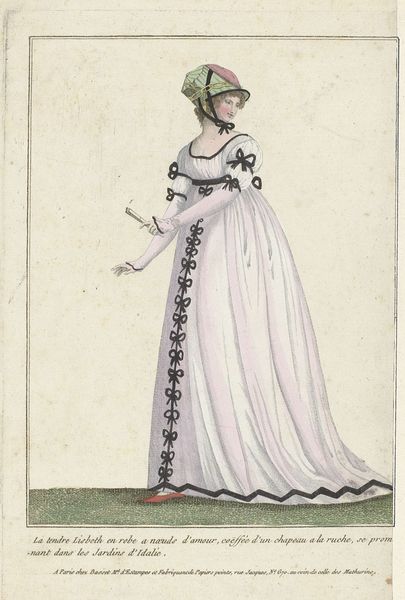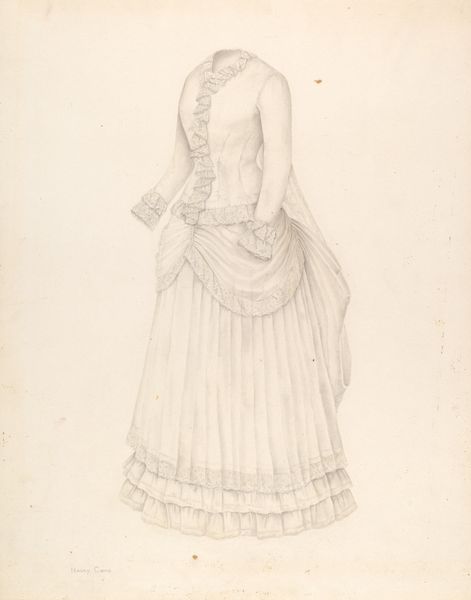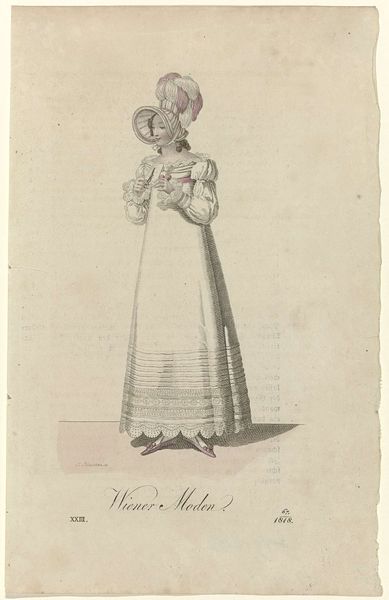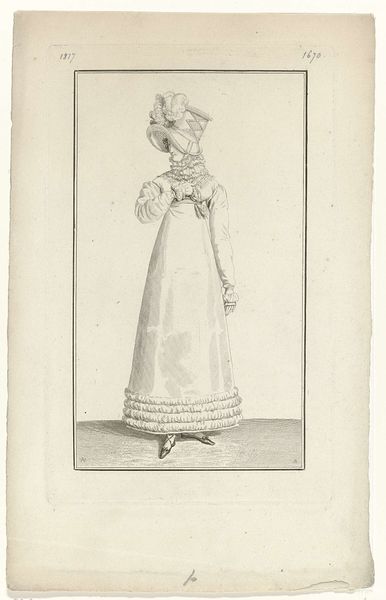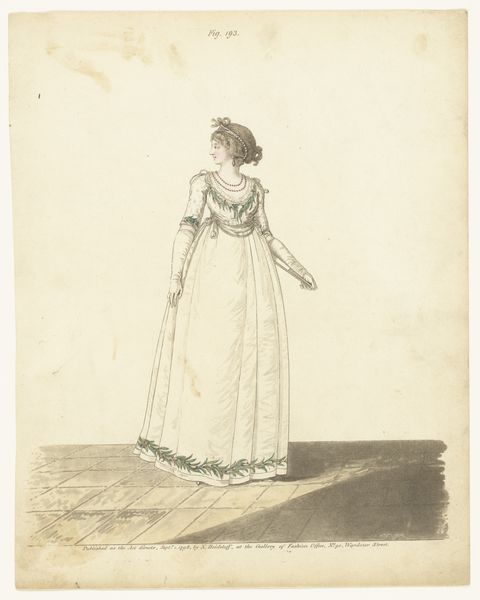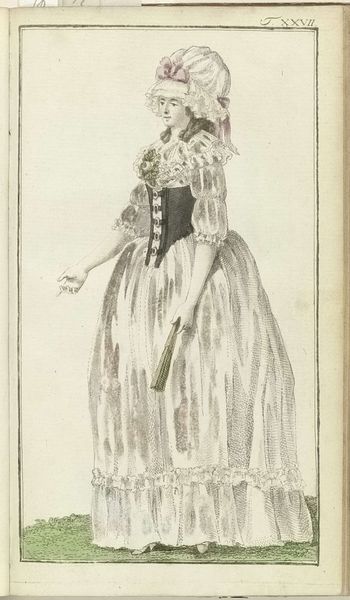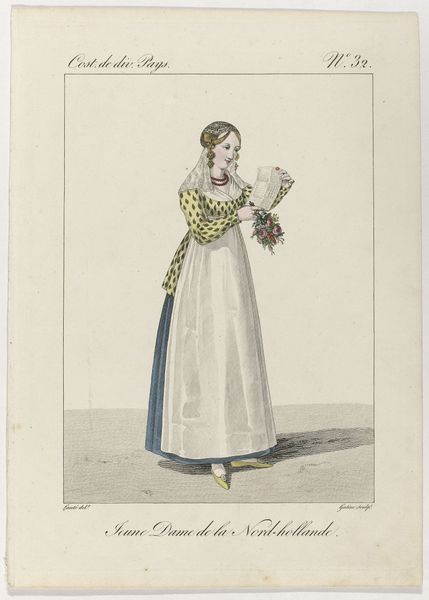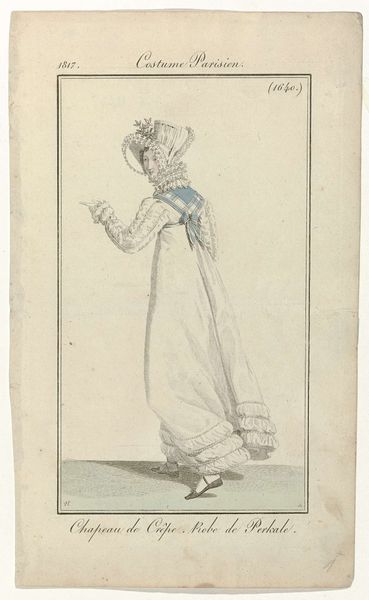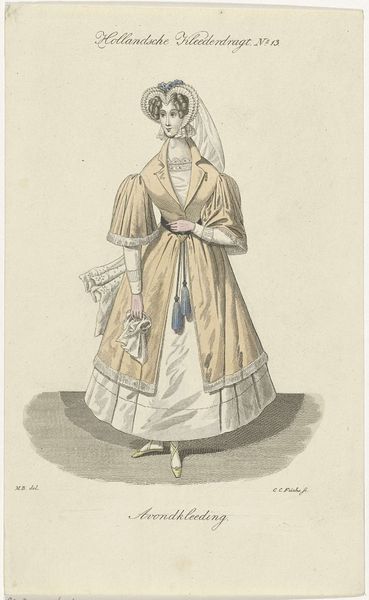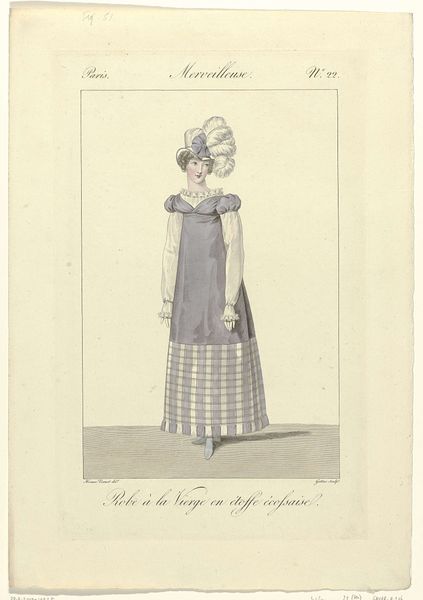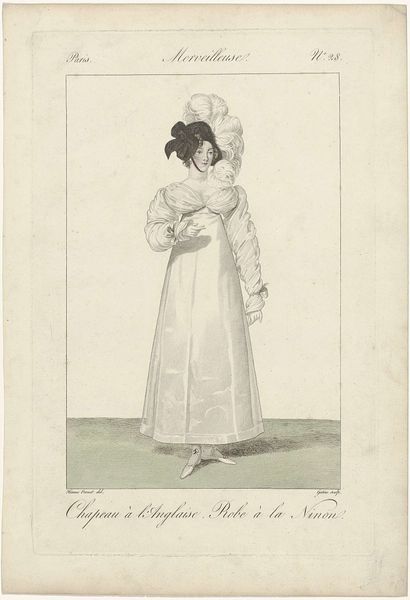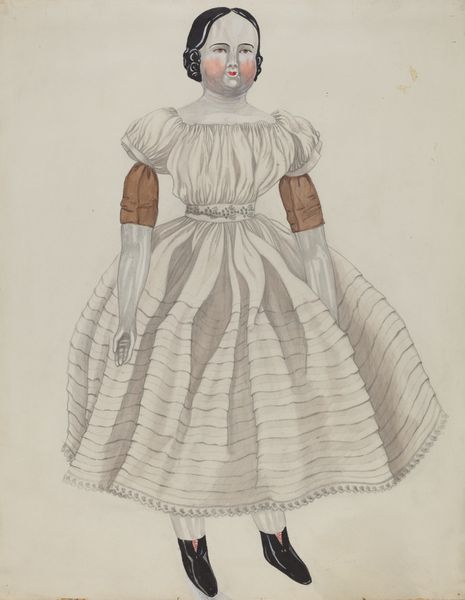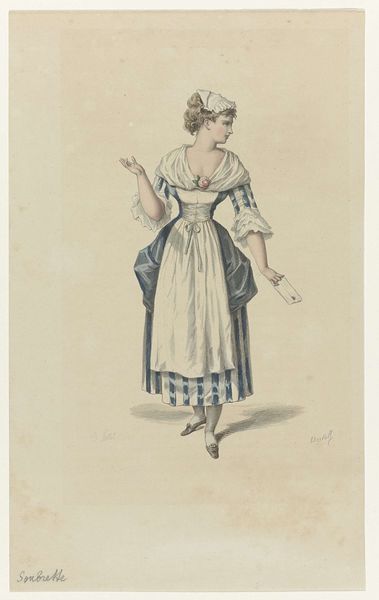
Wiener Zeitung für Kunst, Literatur und Mode, XXII (22), 1818, Nr. 64 : Wiener Moden 1818
0:00
0:00
watercolor
#
portrait
#
watercolor
#
romanticism
#
watercolour illustration
#
genre-painting
Dimensions: height 210 mm, width 130 mm
Copyright: Rijks Museum: Open Domain
Curator: This delicate watercolor illustration is titled "Wiener Zeitung für Kunst, Literatur und Mode, XXII (22), 1818, Nr. 64 : Wiener Moden," created in 1818 by Heinrich Joseph Mansfeld. It's currently housed at the Rijksmuseum. Editor: My first impression is how incredibly fragile it looks. The lightness of the watercolor gives it an ethereal quality, almost like a dream. I am fascinated by the way her dress emphasizes such an impossibly small waist! Curator: Right, these fashion plates were very influential, shaping ideas about beauty and desirability at the time. Examining it in the context of the *Wiener Zeitung*, it shows how print culture and emerging mass media influenced consumption and self-presentation in the 19th century. Consider how fashion magazines, as commercial products, actively participated in the creation and marketing of the ideal body, even one so constricted! Editor: And looking at the craft involved, you can appreciate the detail in the lace and embroidery, achieved with watercolor. It reveals a specific labor process of transferring a fleeting trend onto paper through manual artistry, so its material presence underscores a transition in how clothing was perceived as ephemeral and of-the-moment but rendered with considerable expertise to achieve replication via published print. Curator: Absolutely. It prompts us to think about how the creation of desire through visual media intersects with evolving notions of feminine identity and the expanding marketplace, doesn’t it? There is something almost contradictory in using fine art practices for purely consumerist goals. Editor: In that sense, seeing these romanticised images today challenges the established division between commercial graphics and "fine" art – they speak volumes about consumer culture of the early 19th century. The level of handwork reveals a dedication that rivals much celebrated art! Curator: I agree entirely, a valuable insight into the construction of image and market-based visual representation in society at this period. Editor: And a nice reminder that even seemingly lightweight artistic expressions such as fashion plates reveal considerable effort and a powerful means of conveying the material and social landscape of its time.
Comments
No comments
Be the first to comment and join the conversation on the ultimate creative platform.
